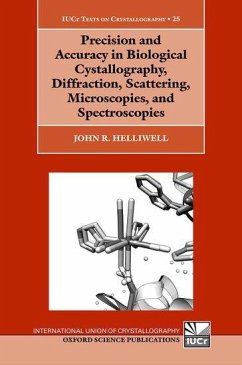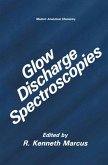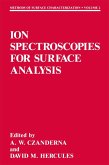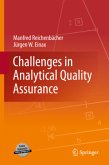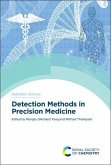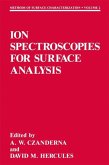John R. Helliwell
Precision and Accuracy in Biological Crystallography, Diffraction, Scattering, Microscopies, and Spectroscopies
John R. Helliwell
Precision and Accuracy in Biological Crystallography, Diffraction, Scattering, Microscopies, and Spectroscopies
- Gebundenes Buch
- Merkliste
- Auf die Merkliste
- Bewerten Bewerten
- Teilen
- Produkt teilen
- Produkterinnerung
- Produkterinnerung
Aimed at postgraduate students from a wide range of science disciplines including physics, chemistry, biology, and mathematics, this book is a teaching book on the whole topic of precision and accuracy in biological crystallography, diffraction, scattering, microscopies, and spectroscopies.
Andere Kunden interessierten sich auch für
![Glow Discharge Spectroscopies Glow Discharge Spectroscopies]() R. Kenneth Marcus (Hrsg.)Glow Discharge Spectroscopies153,99 €
R. Kenneth Marcus (Hrsg.)Glow Discharge Spectroscopies153,99 €![Ion Spectroscopies for Surface Analysis Ion Spectroscopies for Surface Analysis]() Alvin W. Czanderna / David M. Hercules (eds.)Ion Spectroscopies for Surface Analysis60,99 €
Alvin W. Czanderna / David M. Hercules (eds.)Ion Spectroscopies for Surface Analysis60,99 €![Challenges in Analytical Quality Assurance Challenges in Analytical Quality Assurance]() Manfred ReichenbächerChallenges in Analytical Quality Assurance106,99 €
Manfred ReichenbächerChallenges in Analytical Quality Assurance106,99 €![Detection Methods in Precision Medicine Detection Methods in Precision Medicine]() Detection Methods in Precision Medicine204,99 €
Detection Methods in Precision Medicine204,99 €![Ion Spectroscopies for Surface Analysis Ion Spectroscopies for Surface Analysis]() Ion Spectroscopies for Surface Analysis39,99 €
Ion Spectroscopies for Surface Analysis39,99 €![Biological N.M.R. Spectroscopy Biological N.M.R. Spectroscopy]() John L. Markley / Stanley J. Opella (eds.)Biological N.M.R. Spectroscopy237,99 €
John L. Markley / Stanley J. Opella (eds.)Biological N.M.R. Spectroscopy237,99 €![Sample Preparation in Biological Mass Spectrometry Sample Preparation in Biological Mass Spectrometry]() Sample Preparation in Biological Mass Spectrometry154,99 €
Sample Preparation in Biological Mass Spectrometry154,99 €-
-
-
Aimed at postgraduate students from a wide range of science disciplines including physics, chemistry, biology, and mathematics, this book is a teaching book on the whole topic of precision and accuracy in biological crystallography, diffraction, scattering, microscopies, and spectroscopies.
Produktdetails
- Produktdetails
- Verlag: Oxford University Press
- Seitenzahl: 144
- Erscheinungstermin: 1. Oktober 2025
- Englisch
- Abmessung: 234mm x 156mm
- ISBN-13: 9780198952824
- ISBN-10: 0198952821
- Artikelnr.: 74264684
- Herstellerkennzeichnung
- Libri GmbH
- Europaallee 1
- 36244 Bad Hersfeld
- gpsr@libri.de
- Verlag: Oxford University Press
- Seitenzahl: 144
- Erscheinungstermin: 1. Oktober 2025
- Englisch
- Abmessung: 234mm x 156mm
- ISBN-13: 9780198952824
- ISBN-10: 0198952821
- Artikelnr.: 74264684
- Herstellerkennzeichnung
- Libri GmbH
- Europaallee 1
- 36244 Bad Hersfeld
- gpsr@libri.de
John R. Helliwell studied physics at the University of York and obtained a PhD from the University of Oxford in 1978. For many years he was closely associated with the Synchrotron Radiation Source at Daresbury Laboratory, while also holding positions at the University of Keele, the University of York and the University of Manchester, where he is now an Emeritus Professor. His research has contributed to over 100 Protein Data Bank crystal structure depositions spanning enzymes, lectins and crustacyanins with ligands such as saccharides, carotenoids and metallodrugs or metalloimaging agents. In 2014 he was awarded the A. L. Patterson Award by the American Crystallographic Association and in 2015 he was awarded the Max Perutz Prize by the European Crystallographic Association. He is a Fellow of the American Crystallographic Association, a Fellow of the Institute of Physics, the Royal Society of Chemistry, and the Royal Society of Biology.
* 1: Introduction
* 2: The physics of errors as illustrated by X-ray crystallography
* 3: History of the reliability of structure determination methods
* 4: Mass spectrometry
* 5: Structure validation approaches
* 6: Other validation tools: round robin projects
* 7: Similarities and differences in the probes used in structure
determination
* 8: Fibre diffraction
* 9: Powder diffraction
* 10: Small angle solution scattering
* 11: Electron microscopy
* 12: X-ray absorption spectroscopy
* 13: NMR
* 14: EPR for metalloproteins
* 15: Combining methods for accuracy
* 16: Combining methods to span different length scales
* 17: Role of simulations as a complement to experimental structural
dynamics studies
* 18: Role of predictions as a grand challenge: protein fold prediction
is solved
* 19: A new method: X-ray photon correlation spectroscopy to study
biocondensed matter
* 20: Conclusions
* Appendix 1 - Bayesian reasoning in data analysis and model refinement
* 2: The physics of errors as illustrated by X-ray crystallography
* 3: History of the reliability of structure determination methods
* 4: Mass spectrometry
* 5: Structure validation approaches
* 6: Other validation tools: round robin projects
* 7: Similarities and differences in the probes used in structure
determination
* 8: Fibre diffraction
* 9: Powder diffraction
* 10: Small angle solution scattering
* 11: Electron microscopy
* 12: X-ray absorption spectroscopy
* 13: NMR
* 14: EPR for metalloproteins
* 15: Combining methods for accuracy
* 16: Combining methods to span different length scales
* 17: Role of simulations as a complement to experimental structural
dynamics studies
* 18: Role of predictions as a grand challenge: protein fold prediction
is solved
* 19: A new method: X-ray photon correlation spectroscopy to study
biocondensed matter
* 20: Conclusions
* Appendix 1 - Bayesian reasoning in data analysis and model refinement
* 1: Introduction
* 2: The physics of errors as illustrated by X-ray crystallography
* 3: History of the reliability of structure determination methods
* 4: Mass spectrometry
* 5: Structure validation approaches
* 6: Other validation tools: round robin projects
* 7: Similarities and differences in the probes used in structure
determination
* 8: Fibre diffraction
* 9: Powder diffraction
* 10: Small angle solution scattering
* 11: Electron microscopy
* 12: X-ray absorption spectroscopy
* 13: NMR
* 14: EPR for metalloproteins
* 15: Combining methods for accuracy
* 16: Combining methods to span different length scales
* 17: Role of simulations as a complement to experimental structural
dynamics studies
* 18: Role of predictions as a grand challenge: protein fold prediction
is solved
* 19: A new method: X-ray photon correlation spectroscopy to study
biocondensed matter
* 20: Conclusions
* Appendix 1 - Bayesian reasoning in data analysis and model refinement
* 2: The physics of errors as illustrated by X-ray crystallography
* 3: History of the reliability of structure determination methods
* 4: Mass spectrometry
* 5: Structure validation approaches
* 6: Other validation tools: round robin projects
* 7: Similarities and differences in the probes used in structure
determination
* 8: Fibre diffraction
* 9: Powder diffraction
* 10: Small angle solution scattering
* 11: Electron microscopy
* 12: X-ray absorption spectroscopy
* 13: NMR
* 14: EPR for metalloproteins
* 15: Combining methods for accuracy
* 16: Combining methods to span different length scales
* 17: Role of simulations as a complement to experimental structural
dynamics studies
* 18: Role of predictions as a grand challenge: protein fold prediction
is solved
* 19: A new method: X-ray photon correlation spectroscopy to study
biocondensed matter
* 20: Conclusions
* Appendix 1 - Bayesian reasoning in data analysis and model refinement

